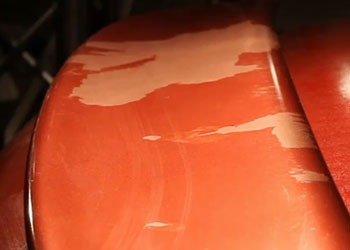
This red Ford had peeling paint on the spoiler. It was originally painted by a bodyshop which didn’t do a very good job, but did charge hundreds of dollars for it. The paint starts to peel if cheap products or incorrect processes are used.
In this post, you will learn how to fix peeling paint yourself. This step-by-step tutorial is designed for beginners with no experience.
This project will take you a few hours to complete. It can be done over the weekend. You will have to spend some time waiting for the layers of paint to dry, so grab a case of cold beer. All of the products I recommend can be ordered online. They are high quality, but still affordable. In case you are on a very tight budget, I listed products under “necessary items” and “optional items”.
Necessary Items:
- Assorted Wet/Dry Sandpaper – This pack includes 5 sheets of assorted sandpaper (1 sheet each of 180, 320, 600, 1000, and 1,500) and can be used for sanding primer, clear coats, and automotive paints.
- Red Primer
(aerosol spray can) – For this repair, red primer worked the best.
- Touch Up Paint (aerosol spray) – Custom paint matching your car. Click on the link and select your color.
- Clear Coat (aerosol spray can)
- Auto masking tape and Old Newspapers
- Prep solvent – It removes oils, road grease, dirt, car wax, and other surface contaminants and also improves adhesion to the surface.
- Meguiar’s Ultimate Compound – You can use any rubbing compound you like, just make sure it is clear coat safe. Meguiar’s Ultimate Compound is the best car scratch remover I’ve ever tried. It removes light-to-deep clear coat scratches, swirl marks, stains, and heavy oxidation in just a few minutes. It’s clear coat safe and inexpensive.




 Optional Items:
Optional Items:
- Aerosol Spray Trigger
– I put this item under optional items, however, I think it is a must-have when it comes to spray paint. It turns a spray aerosol can into a spray gun making it easier to apply the paint and clear coat.
- Meguiar’s Ultimate Polish – Use your favorite polishing compound. I like Meguiar’s Ultimate Polish because it uses diminishing abrasive technology, meaning the tiny abrasives break down gradually as you rub. The paint color will look bolder and brighter with a smooth, sleek shine. It is high quality, inexpensive, long-lasting, and clear coat-safe.
- Meguiar’s Tech Wax – Use your favorite wax. I like Meguiar’s NXT Generation Tech Wax. This product is amazing because not only does it give the deepest and clearest shine you’ve ever seen, but it also acts as a paint sealer giving your car long-lasting protection.
- Microfiber Towel – Avoid using other materials such as bath towels, paper towels, or washcloths, as they might leave scratches on the clear coat.
- Dual Action Sander/Polisher – I found a nice beginner polisher on Amazon for a reasonable price that will give you amazing results. There are a lot of professional polishers, but they cost over $200. This Black & Decker polisher got great customer reviews.
- Tack Rag
- Applicator Pads – These pads are used to apply rubbing compound, polish, and wax.
- Respirator, Gloves
, Goggles
Video Tutorial: How to Repair Peeling Car Paint
Step 1: Get Touch-Up Paint
To buy matching touch-up paint, you need to know the paint color code for your car. The label with that information should be located somewhere inside your car.
After you find it, you can order paint from a dealership or, if you want to save money, online. Avoid buying it at the mega auto stores. They usually sell only generic colors which more likely not going to match your car.
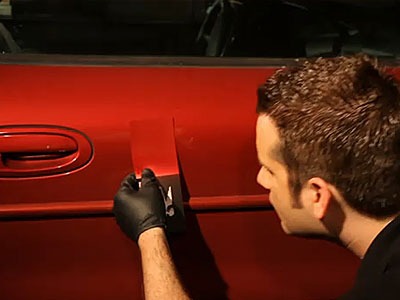
Step 2: Personal Safety
When working with toxic paint products, protect yourself by wearing gloves, goggles, and a mask. These simple items don’t cost much but will protect you against injuries.
Step 3: Prep the Area
First, wash the surface with warm water. Next, follow it with prep solvent to remove oil, wax, and dirt. Dry the area with a microfiber towel.
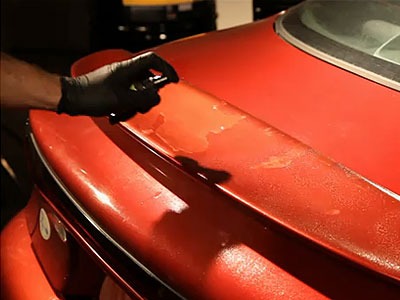
Step 4: Sanding
In this step, you want to get rid of as much old paint as possible by sanding it with 320-grit sandpaper. Some people make the mistake of using wood sandpaper to save money. Wood sandpaper is too rough.
Use special wet/dry auto sandpaper to get the best result. Sand the spoiler with 320 grit sandpaper to remove peeling paint.
Follow it with 600 grit. You can dry sand it. Wrap the sandpaper around a sponge for convenience. By the end of this step, the area should be smooth and ready for primer.
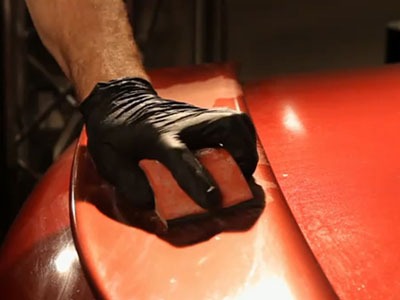
Step 5: Clean the Area
Clean the area with prep solvent to remove all the dust. Dry it completely. From the photo below, you can see that peeling paint has been removed and the edges of the remaining paint have been feathered out. The surface should be smooth and even to the touch.
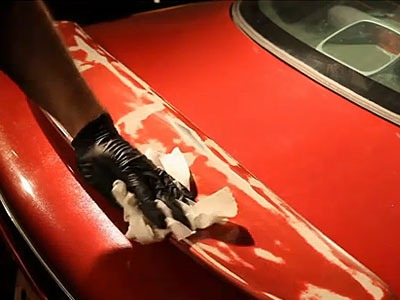
Step 6: Masking
Mask off the area with auto masking tape and old newspapers or plastic. Don’t use duct tape. I keep saying it in every tutorial because so many people make this mistake. Duck tape residue is very hard to remove.
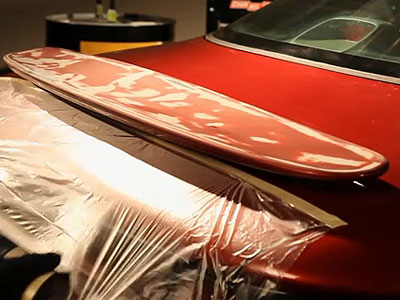
Step 7: Apply Primer
The primer comes in different colors. Red primer works best for this repair. Read the instructions first. Use a plastic trigger to turn the can into a spray gun. Shake well. Hold it 10-15 inches away from the surface and spray in even strokes. 3-4 layers should be enough. Give each layer 15 min of drying time.
Tip: Using a plastic trigger to turn a can into a spray gun is a simple and very economical solution. This trigger costs only a few dollars but makes a big difference in application.
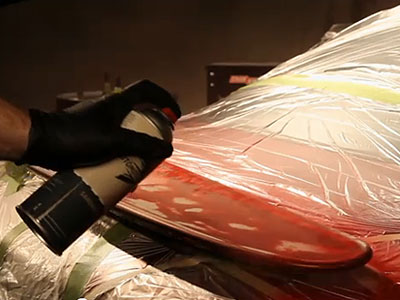
Step 8: Sanding Primer
Give primer 30 min to dry before sanding. After the primer is dry, we need to remove small imperfections by sanding it with 600-grit sandpaper and then follow it with 1,000 grit. Clean the surface of dust and dry completely. Now, it is ready for a touch-up paint.
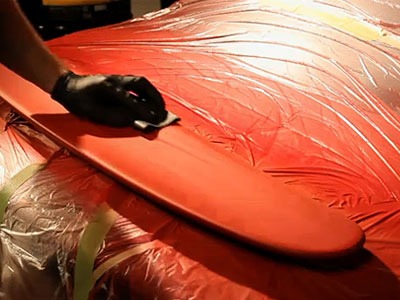
Step 9: Apply Touch-Up Paint
Read instructions on the touch-up paint. Test it in a hidden spot. To get better control and coverage use plastic triggers. Apply 3-4 thin coats of touch-up paint giving each layer 15 min of drying time.
After the paint is dry, the surface will look dull and flat. To make it shiny like the rest of your car, apply a clear coat.
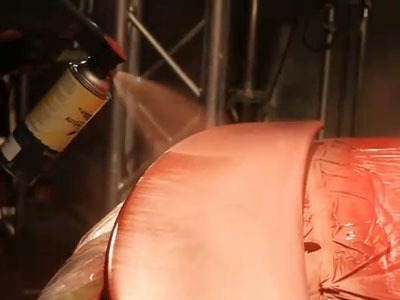
If you see the dust settling, gently remove it with a tack rag.
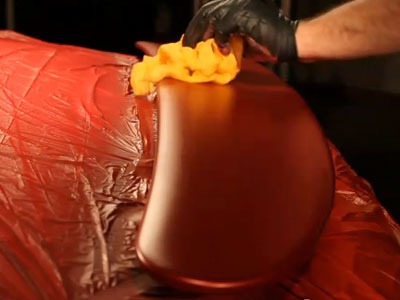
Step 10: Applying Clear Coat
Wait for 30 min for the paint to dry. Then apply 3-4 coats of clear coat. A clear coat gives your car shine and protects the paint from scratches, oxidation, and chemicals. Read the instructions on the can.
Shake it well. Slide the plastic trigger onto the can. Hold the can 10-15 inches away from the surface and evenly spray the area.
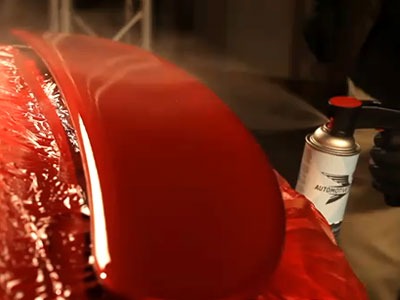
Step 11: Rubbing Compound
Rubbing compound, also called scratch remover, can be used to remove any imperfections from the clear coat. Also, if you get an orange peel, you can lightly sand it with 1,500 grit sandpaper and then use rubbing compound to remove sand scratches.
Rubbing compound is a great thing to have for removal of light scratches, swirl marks, and heavy oxidation. Can be used by hand or machine.
Step 12: Polishing Compound
This step is really optional. To get showroom shine use polishing compound. It can be applied by hand or polishing machine.
Step 13: Wax
Wait for 30 days to apply wax. It takes paint about one month to dry completely. Applying right after the repair is done, will prevent solvents from evaporating.
Final result:
As a final result, you should have a shiny beautiful paint job that will last for years.
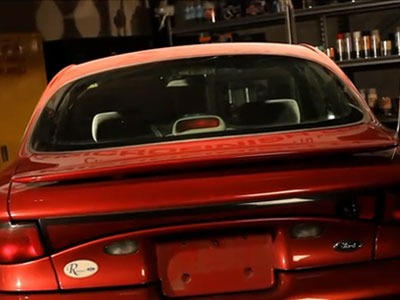
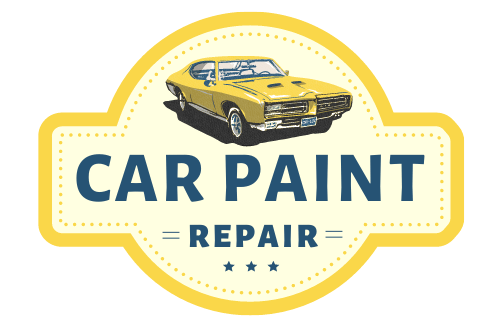
Awesome tutorial. I’ll have to wait a few months until the weather dries out and warms up a bit out here in the great NW. Looking forward to fixing up the peeling paint all over my front bumper. The auto shop did a terrible job after a repair a few years ago!
Have not tried this yet but will. Thanks for the lesson .